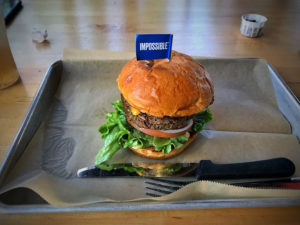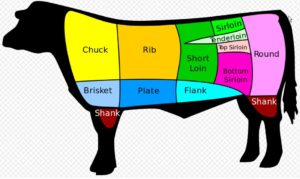The First Generation of the Impossible Burger
 I was pretty high on the future potential for Impossible Foods in a previous article I wrote.
I was pretty high on the future potential for Impossible Foods in a previous article I wrote.
Troublesome areas that I wrote about include, at the time, getting regulatory approval of the ingredient soy leghemoglobin. This ingredient is a hemp ingredient and is the secret sauce on the product tasting like a real burger. The FDA did give the approval and said it is generally regarded as safe (GRAS). The product also had gluten in it which for me personally is not good.
Impossible Burger 2.0
The Impossible Burger 2.0 was introduced At the CEC show in 2019. The question on the soy leghemoglobin ingredient has been totally resolved with the FDA sending Impossible Foods a ‘no questions’ letter saying that its ingredients were compliant with food safety regulations Also, with this new generation, the gluten ingredient has been replaced with soy protein concentrate, so the product is now gluten-free.
So far the Impossible burger has been distributed in a business-to business manner with products sold to foodservice establishments. They are now looking to enter the retail space, so consumers can buy at grocery stores.
I have not tasted the product, yet, but there have been very good reviews of the product at the CEC show. Some reviewers could not taste or see the difference between the Impossible Burger and a meat burger. This is crucial for Impossible Foods’ strategy in converting meat-eating consumers to their burgers.
The FDA has said that the soy leghemoglobin ingredient could be considered a color additive in the future. Impossible Foods is now working on getting a color additive petition for the soy leghemoglobin.
Market Dynamics
 Pat Brown is the brainchild of Impossible Foods, and feels that the entire industry will be a $3 trillion market. He has a plan to take animals out of the food system by 2035.
Pat Brown is the brainchild of Impossible Foods, and feels that the entire industry will be a $3 trillion market. He has a plan to take animals out of the food system by 2035.
One of the competitors for the Impossible burger will be the Incredible Burger being introduced by Nestle. They already have the distribution network and relationships within the retail market, so it will be interesting to see how fast they can grow.
The company that can produce the taste, texture, and look of a meat burger will be the company that will ultimately be the market leader. Impossible Burger feels that their intellectual property provides them with a product that most closely mimics a meat burger.
Future Potential
I rate Impossible Food’s future potential higher than the 7.5 I rated them before. The issues that I mentioned before with the soy leghemoglobin and the gluten have been resolved. Also, the taste, texture, and color have been improved with formulation adjustments.
I rate the potential at 8.5 out of 10. It is still rated a little below the other lab-grown meats since those are real meats. Impossible Burger’s recipe still does have various processed ingredients to give the product taste like meat.
If you want to get further thoughts from me, and if you haven’t already done so, please:
